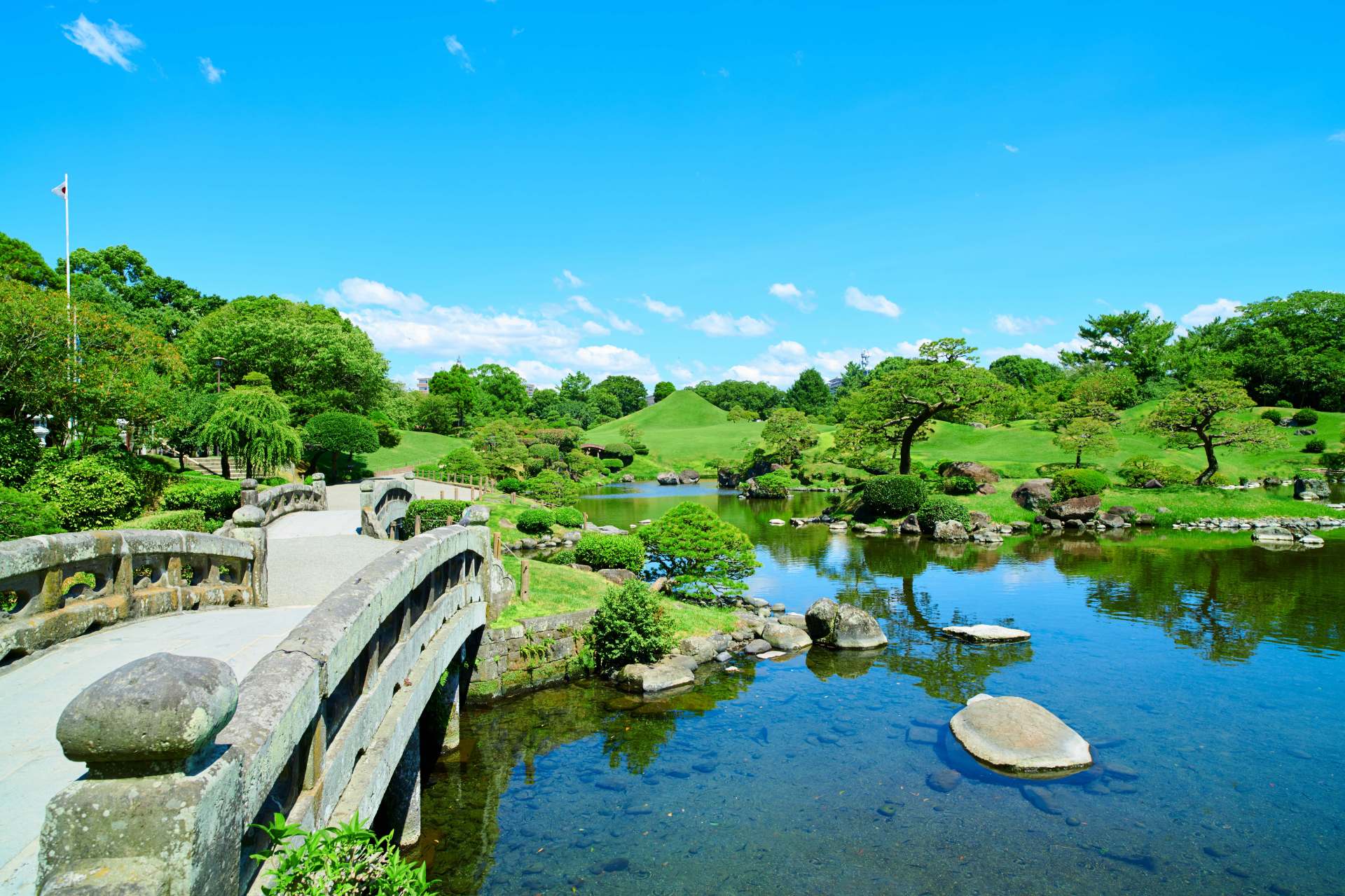前年帶著家人跟朋友在水前寺體驗和服~穿梭在日式庭園中~好有意境😃令人很懷念❤️
看到~水前寺耗費八十年光陰才之時築造泉水・築山等,完成現在所見的庭園,以「水前寺成趣園」之名,也難怪會被指定為國之名勝和國之史跡。真是讚嘆不已👍

Verified [Verified] denotes information that has been published with confirmation of its owing parties.
Suizenji Jojuen Garden
The Hosokawa clan's elegant garden in the Higo domain.
It is a stroll garden with spring water that Tadatoshi, the first lord of the Hosokawa clan, created after building a teahouse here where subsoil water from the Aso Mountains gushed forth. Tsunatoshi, the third lord of the Hosokawa clan, later created a large-scale garden that was named "Jojuen" after a poem by Tao Yuanming.
The garden is home to the Izumi Shrine dedicated to the Hosokawa clan, a Noh theater, and the Kokindenju-no-ma teahouse, which was relocated from the Kyoto Imperial Palace. The garden is filled with cherry and pine trees, floating rocks in the pond, and a hill resembling Mount Fuji, all of which evoke an Edo-era atmosphere. The area including Suizenji Jojuen was selected as one of the Heisei era's 100 best water sources, and it attracts many visitors for the "water of longevity" that springs in the precincts of the Izumi Shrine.
During the Izumi Shrine's grand festival, the Noh stage and traditional horseback archery are performed. Visitors can enjoy a cup of matcha green tea and Japanese sweets in the Kokindenju-no-ma or the adjoining teahouse, which has the most beautiful view of the garden.
Highlights
-
The garden is the second best tourist attraction in Kumamoto City after Kumamoto Castle, and is a Japanese garden associated with the Hosokawa clan.
-
The pond in the garden's center is a spring-fed pond that was selected as one of the Heisei era's 100 best water sources.
-
The water that springs from the Izumizu Shrine, which enshrines Hosokawa feudal lords, is known as the water of longevity.
-
It is also the location of the discovery of Suizenjinori, a special seaweed used in Japanese cuisine.
Photos
-
![The cone-shaped hill resembling Mount Fuji is the symbol of this garden.]()
The cone-shaped hill resembling Mount Fuji is the symbol of this garden.
-
![The Hosokawa clan's stroll garden took three generations to complete.]()
The Hosokawa clan's stroll garden took three generations to complete.
-
![The 10,000 m² pond in the garden's center is a spring-fed pond that was selected as one of the Heisei era's 100 best water sources.]()
The 10,000 m² pond in the garden's center is a spring-fed pond that was selected as one of the Heisei era's 100 best water sources.
-
![Many people visit here during the cherry blossom season.]()
Many people visit here during the cherry blossom season.
-
![Visitors can take a stroll around and admire the well-kept garden from various angles.]()
Visitors can take a stroll around and admire the well-kept garden from various angles.
Reviews
-
-
Eva Chang
很喜歡水前寺的庭園~很有意境~附近的商家也很好逛哦~我之前去還和服體驗哦~感受自已像個日本妹一樣~呵呵
-
Teresa Chuang
附近的商店街很多在賣辣蓮藕,吃起來口感不算太差。
-
楊貴華
庭園設計仿照東海道53次美景,將她們濃縮在庭園裡,值得細細品味。
Details
- Name in Japanese
- 水前寺成趣園
- Postal Code
- 862-0956
- Address
- 8-1 Suizenjikoen, Chuo-ku, Kumamoto City, Kumamoto
- Telephone
- 096-383-0074
- Holiday
- Open every day
- Business Hours
- 8:30am-5:00pm (Admission allowed until 4:30pm)
- Admission
- Adults 400 yen, 15 years old and under 200 yen
- Directions
- From JR Kumamoto Station, take the municipal bus and get off at the “Suizenji Koen”, then walk for 3 minutes.
- Credit Cards
- Not accepted
- Official Website
-
Official Website (Japanese)
Kumamoto City Tourism Policy Division (English)









